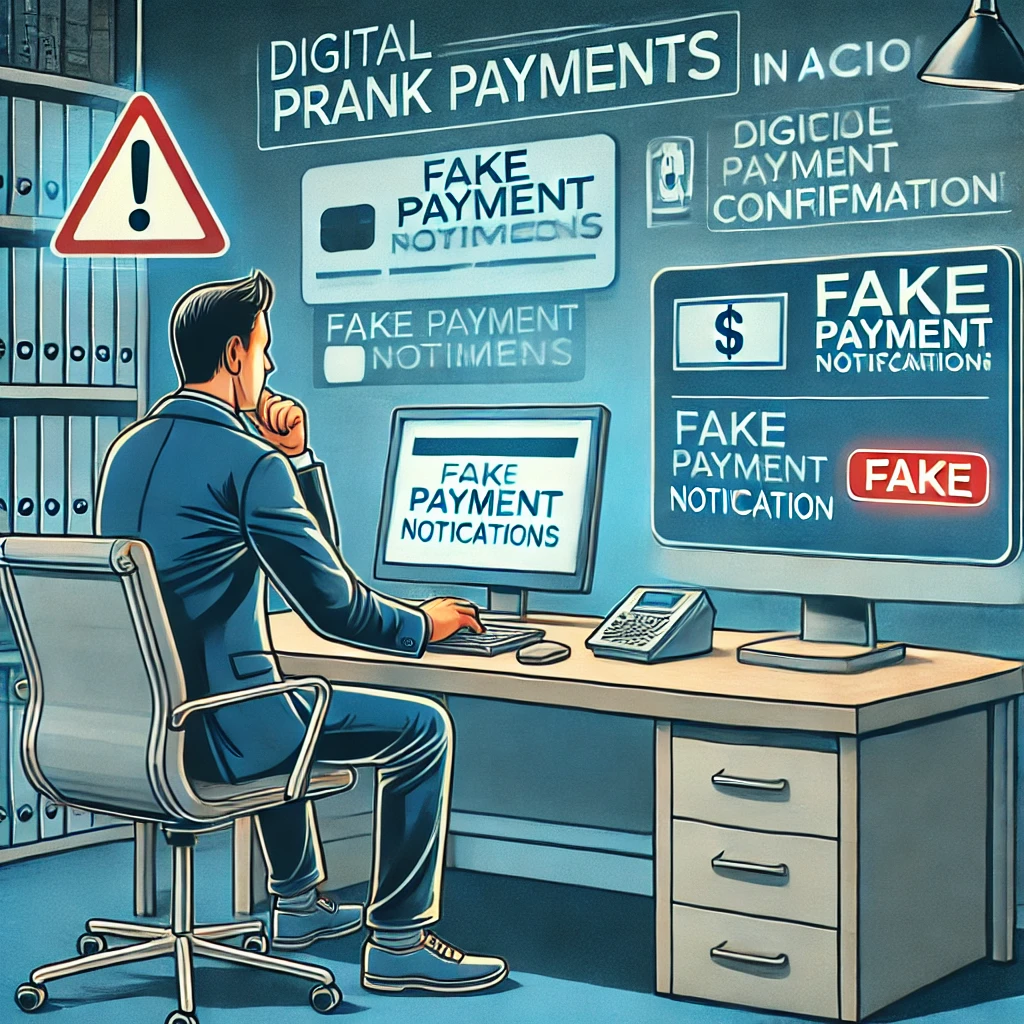In today’s interconnected digital world, online financial transactions have become a cornerstone of modern commerce. However, as technology evolves, so too does the potential for misuse. One emerging trend is the concept of prank payment—a disruptive act where individuals mimic or simulate payment transactions to create confusion, disrupt services, or, in some cases, defraud businesses or individuals.
This comprehensive guide explores the intricacies of prank payment, its implications, and the necessary steps to prevent and address it effectively.
What Is Prank Payment?
Prank payment refers to the act of falsely initiating or simulating a financial transaction with the intention of misleading the recipient. This act can take various forms, including:
- Falsified screenshots of payment confirmations.
- Initiating payment processes but canceling them before completion.
- Using digital tools to mimic legitimate transaction notifications.
While some prank payments may stem from harmless jest, they often lead to confusion, wasted resources, and financial losses for businesses and individuals.
How Does Prank Payment Work?
Prank payment exploits vulnerabilities in digital payment systems and human oversight. Here are the common methods used:
1. Fake Payment Screenshots
One of the most prevalent techniques involves creating counterfeit screenshots of payment confirmations. This can be done using image-editing software or dedicated apps designed to mimic payment interfaces. The recipient, unaware of the deception, may release goods or services prematurely.
2. Payment Reversal or Cancellation
In this method, pranksters initiate a transaction but cancel it before completion. The recipient receives an initial notification of payment but later discovers that the funds were never transferred.
3. Social Engineering and Notification Spoofing
Pranksters may manipulate notification systems to send false alerts of successful payments. These spoofed notifications appear legitimate and can trick victims into thinking payments have been received.
Why Is Prank Payment a Growing Concern?
The rise of digital payment systems has made transactions faster and more convenient. However, it has also created opportunities for exploitation. The growing prevalence of prank payment can be attributed to:
- Ease of Access to Digital Tools: Apps and software that mimic payment systems are readily available.
- Lack of Awareness: Many individuals and small businesses are unfamiliar with the signs of prank payments, making them easy targets.
- Minimal Consequences for Perpetrators: In some jurisdictions, prank payments are not taken seriously, leading to insufficient deterrents.
Impact of Prank Payment on Businesses and Individuals
1. Financial Losses
While prank payments may not always involve direct theft, they can lead to indirect financial losses. Businesses may release goods or provide services based on falsified payment confirmations, incurring costs they cannot recover.
2. Reputational Damage
For businesses, falling victim to prank payments can harm their reputation. Customers may perceive the business as vulnerable or unprofessional, leading to a loss of trust.
3. Operational Disruptions
Prank payments can disrupt workflows, especially for small businesses that rely on prompt payments to maintain cash flow. Time and resources spent investigating such incidents further strain operations.
How to Identify Prank Payments
1. Verify Payment Confirmations
Always cross-check payment confirmations with the actual transaction records in your payment gateway or bank account. Avoid relying solely on screenshots or email notifications.
2. Watch for Red Flags
Be cautious if a customer:
- Insists on receiving goods or services immediately after providing payment proof.
- Provides payment proof that looks altered or lacks essential details.
- Uses unverified payment platforms.
3. Enable Multi-Layered Notifications
Ensure your payment system sends notifications to multiple channels (e.g., email and SMS) to reduce the risk of spoofing.
Preventing Prank Payment
1. Implement Secure Payment Systems
Choose payment platforms that offer robust security features, such as encryption, fraud detection, and transaction tracking. Popular platforms like PayPal, Stripe, and Square provide these capabilities.
2. Establish Clear Policies
Communicate payment policies to your customers. For instance:
- Do not release goods or services until payment has been verified.
- Require payments to be completed through approved channels.
3. Use Real-Time Verification Tools
Real-time verification tools can confirm the status of a transaction before proceeding. These tools integrate with payment gateways to ensure funds are received before orders are processed.
What to Do If You Fall Victim to a Prank Payment
1. Document the Incident
Collect evidence, including screenshots, emails, and transaction details, to build a case. This documentation may be required if you report the incident to authorities or your payment provider.
2. Notify Your Payment Provider
Report the prank payment to your payment provider immediately. They may have tools to trace and block fraudulent transactions.
3. File a Complaint
In cases where financial losses occur, file a formal complaint with local law enforcement or consumer protection agencies.
Educating Customers and Employees
Raising awareness is one of the most effective ways to combat prank payments. Educate your team and customers about the risks and preventative measures through:
- Workshops and Training: Conduct regular sessions on identifying and handling prank payments.
- Informational Materials: Share brochures, FAQs, or videos explaining how to spot and report suspicious transactions.
- Online Alerts: Post reminders on your website and social media about your payment verification policies.
Future Trends in Prank Payment Prevention
As prank payments continue to evolve, so too will the technologies to counter them. Emerging trends include:
- Artificial Intelligence (AI): AI-powered fraud detection systems can analyze transaction patterns to identify anomalies in real time.
- Blockchain Technology: Blockchain’s transparency and immutability can provide an added layer of security for digital payments.
- Biometric Verification: Using fingerprints or facial recognition for payment authentication can reduce the risk of prank payments.
Conclusion
Prank payment is more than just a nuisance—it’s a challenge that businesses and individuals must address proactively. By understanding how prank payments work, identifying potential red flags, and implementing robust security measures, you can protect yourself and your organization from unnecessary disruptions and financial losses.
